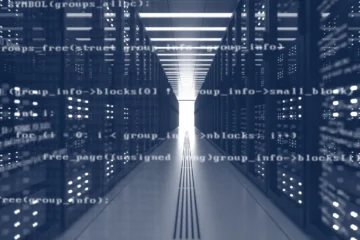Table of Contents
Digital Security System

In today’s fast-paced digital era, the need for robust digital security systems has never been greater. With cyber threats becoming more sophisticated and prevalent, understanding the basics of a digital security system is essential for individuals and organizations alike. In this blog, we will delve into the fundamental components of a digital security system, exploring how it works to protect sensitive data, networks, and devices from potential cyber risks.
Digital Security System
An Overview A digital security system is a comprehensive framework of tools, practices, and technologies designed to safeguard digital assets from unauthorized access, data breaches, and cyber-attacks. It involves a multi-layered approach, where each layer serves as a defense barrier to mitigate potential risks.
Access Control
The First Line of Defense Access control is the foundation of any digital security system. It ensures that only authorized users can access specific resources, data, or systems. Techniques like passwords, PINs, biometrics, and multi-factor authentication (MFA) help verify the identity of users and limit access to critical assets.
Data Encryption
Safeguarding Confidentiality Data encryption is an integral part of digital security systems, protecting sensitive information from unauthorized access. By converting plaintext data into ciphertext using complex algorithms, encryption ensures that even if data is intercepted, it remains indecipherable to unauthorized individuals.
Firewalls and Intrusion Detection Systems (IDS)
Firewalls act as sentinels, monitoring and controlling network traffic to prevent unauthorized access and potential cyber threats. Intrusion Detection Systems (IDS) complement firewalls by detecting and alerting administrators to suspicious activities within the network, such as malware or unauthorized access attempts.
Endpoint Security
Protecting Devices and Users Endpoints, such as laptops, smartphones, and IoT devices, are often the weakest links in digital security. Endpoint security solutions protect these devices from malware, phishing attacks, and other threats, ensuring the safety of users and their data.
Incident Response
Preparing for Unexpected Cyber incidents can occur despite the strongest precautionary measures. An effective incident response plan outlines the steps to detect, contain, and mitigate the impact of a cyber-attack. Timely response and efficient recovery are critical to minimizing damage.
Regular Updates and Patch Management
Maintaining the security of a digital system requires regular updates and patch management. Software vendors release updates to fix vulnerabilities and address potential weaknesses. Regularly applying these updates ensures that the system remains resilient against emerging threats.
Security Awareness Training
Human mistake is a major contributor to cyber mishaps. Security awareness training educates users about potential threats, phishing attempts, and best practices for digital security. Educated users are better equipped to identify and respond to potential risks.
Conclusion
In an interconnected world, a robust digital security system is the first line of defense against cyber threats. Understanding the basics of a digital security system is crucial for individuals and organizations to protect their valuable data, privacy, and digital assets. By implementing access controls, data encryption, firewalls, IDS, endpoint security, incident response plans, and security awareness training, users can create a resilient digital security environment.
As cyber threats continue to evolve, staying informed about the latest security measures and continuously updating the digital security system becomes even more critical. By embracing a proactive approach and fostering a culture of cybersecurity, we can collectively ensure a safer digital landscape for everyone. Remember, a strong digital security system is not just an option but a necessity in today’s interconnected world.



